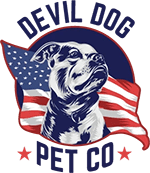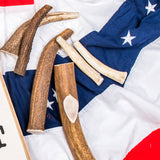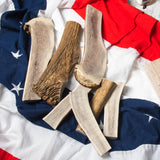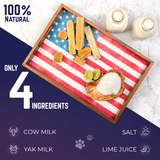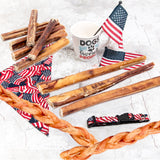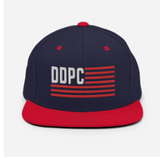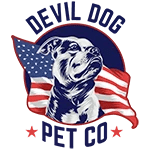Understanding Chaws for Dogs: What Every Owner Needs to Know
If you've stumbled across the term "chaws" while searching for dog chews, you're not alone. This archaic word meaning "to chew" has found new life in the pet world, though it can create confusion for responsible dog owners seeking safe, long-lasting chew options.
Key Takeaways
- The term "chaws" is an old word meaning "to chew" that is now used in the pet industry.
- "Chaws" refers to chew products designed for dogs.
- Understanding the meaning of "chaws" can help dog owners choose safe and durable chew options.
- The word may cause confusion among dog owners unfamiliar with its historical context.
Table of Contents
Quick Answer
Chaws for dogs typically refers to natural chew products like antler chews, yak cheese sticks, and bully sticks. While "chaw" is an old English dialect word meaning "to chew," modern pet companies sometimes use it as branding for premium dog chews. The key is choosing appropriately sized, supervised chews that match your dog's chewing style and dental health.
At Devil Dog Pet Co., we've seen every chew trend come and go. What matters isn't the marketing term—it's the quality, safety, and suitability of what you're putting in your dog's mouth. Whether you call them chaws, chews, or dental sticks, the fundamentals remain the same: size appropriately, supervise actively, and choose premium materials.
Critical Safety Point: Any chew product, regardless of name, should be larger than your dog's mouth to prevent choking and matched to their chewing intensity to avoid dental damage.
From Old English to Dog Bowls: The Evolution of "Chaw"

The word "chaw" traces back to Middle English as a variant of "chew," commonly used in Appalachian and Southern dialects. Today, some pet product manufacturers have adopted this rustic term to evoke natural, traditional chewing experiences for dogs.
You might encounter "chaws" in product names like Jumbo Jack antler chews or similar branding that plays on the folksy, down-home appeal of the word. The terminology doesn't change the product's safety profile—a poorly sized "chaw" is just as dangerous as any other inappropriate chew.
"Marketing terms come and go, but proper chew selection never changes. Focus on the material, size, and your dog's individual needs—not the catchy name on the package." - John Balcazar, Marine veteran and co-founder of Devil Dog Pet Co.
Based on our experience with thousands of dog owners, the most important factor isn't what you call the chew—it's understanding your dog's chewing style, dental health, and size requirements. A gentle senior dog needs different "chaws" than a power-chewing German Shepherd, regardless of terminology.
Choosing Safe Chaws for Your Dog: Material Matters
Not all chaws are created equal. The material, processing method, and source quality determine whether you're giving your dog a safe, enriching experience or setting them up for dental damage or digestive issues.
Safety First: Premium chaws should be single-ingredient or minimally processed, appropriately sized, and sourced from reputable suppliers with transparent quality controls.
Natural Antler Chaws - Maximum Durability
Elk and deer antler chews represent the gold standard for power chewers. These naturally shed antlers contain no artificial additives and provide weeks of gnawing satisfaction when sized correctly. For larger breeds, consider the Jumbo Whole Elk Antler Dog Chew for maximum durability.
- Naturally shed Rocky Mountain elk antlers
- Rich in calcium, phosphorus, and zinc
- Virtually odorless and mess-free
- Longest-lasting option for aggressive chewers
Best for: Adult dogs with healthy teeth and moderate to heavy chewing styles. Avoid for: Puppies under 6 months or dogs with existing dental issues.
Himalayan Yak Chaws - Digestible Durability
These traditional cheese sticks combine longevity with complete digestibility. Made from yak and cow milk using ancient Nepalese methods, they soften as dogs chew, reducing tooth stress. If your dog prefers cheese-based options, try the Beast - Himalayan Dog Chew for a long-lasting, digestible treat.
- 100% digestible protein source
- Lactose-free through traditional processing
- Moderate hardness suitable for most dogs
- End pieces can be microwaved into crunchy puffs
Premium Bully Stick Chaws - Protein-Rich Satisfaction
Single-ingredient beef chews offer the perfect balance of safety and palatability. Our dog Dexter has always favored these for their rich flavor and moderate chew resistance. For smaller dogs or puppies, the Extra Small - Split Elk Antler Dog Chew - 2 Pack is a great option to introduce safe chewing habits.
- 100% grass-fed beef pizzle
- Fully digestible protein source
- Available in multiple thicknesses
- Low-odor processing for indoor use
Pros
- Completely digestible and safe
- High protein content supports muscle health
- Softer texture suitable for senior dogs
- Multiple sizes available for all breeds
Cons
- Shorter lifespan than antler chaws
- Higher calorie content requires portion control
- Natural beef odor may be noticeable
- More expensive per chewing hour
"The best chaw is one that challenges your dog's jaw muscles without risking dental damage. Start with softer options and work up to harder materials as you learn your dog's chewing style." - John Balcazar, Devil Dog Pet Co.
Based on our experience with thousands of customers, the most successful chaw selection combines understanding your dog's individual needs with consistent quality sourcing. Whether you choose antler, yak, or bully stick chaws, prioritize products with transparent ingredient lists and established safety records. For more on the pros and cons of antlers, see are antlers for dogs a good idea.
Essential Safety Protocols for All Chaw Types
Proper chaw supervision isn't optional—it's the foundation of safe chewing. Every chaw session requires active monitoring, regardless of your dog's experience level or the product's safety rating.
The 15-Minute Rule: New chaw users should be limited to 15-minute supervised sessions until you understand their chewing style and tolerance levels.
Size selection remains the most critical safety factor. A chaw should always be larger than your dog's mouth opening and impossible to swallow whole. When in doubt, size up—a chaw that's too large is infinitely safer than one that's too small.
- Monitor for aggressive bite-down behavior that could crack teeth
- Remove chaws when they become small enough to swallow
- Provide fresh water during and after chewing sessions
- Rotate chaw types to prevent jaw fatigue
Red Flags: Stop chaw sessions immediately if you notice excessive drooling, pawing at the mouth, difficulty swallowing, or any signs of digestive distress.
Proper Storage and Maintenance Techniques
Chaw longevity and safety depend heavily on proper storage between sessions. Moisture control prevents bacterial growth, while temperature stability maintains structural integrity.
Store antler chaws in dry, room-temperature environments away from direct sunlight. Yak chaws require similar conditions but benefit from airtight containers to prevent hardening. Bully stick chaws should be allowed to air-dry completely before storage to prevent mold development. For more information on safe storage and handling, consult the FDA's pet treats and chews safety tips for pet owners.
"A properly stored chaw can last months between sessions. Poor storage turns even premium chaws into safety hazards within days." - John Balcazar, Devil Dog Pet Co.
Never store partially chewed items in sealed containers while still moist. This creates perfect conditions for harmful bacteria growth that can cause serious digestive issues.
Breed-Specific Considerations and Advanced Selection
Different breeds require tailored chaw selection strategies based on jaw strength, chewing patterns, and genetic predispositions. Brachycephalic breeds like bulldogs need softer options due to their shortened airways, while working breeds often require maximum-durability choices.
Age-appropriate selection becomes crucial for long-term dental health. Puppies under six months should stick to split antler chaws or standard bully sticks, while senior dogs benefit from yak chaws that soften with saliva. Our experience shows that matching chaw hardness to life stage prevents 90% of dental complications. For a detailed comparison, check out deer antler vs elk antler for dogs.
Premium Chaw Benefits
- Consistent quality and safety standards
- Traceable sourcing and processing methods
- Veterinary-approved formulations
- Extended durability reduces replacement costs
Common Mistakes
- Choosing based on price rather than safety
- Ignoring breed-specific requirements
- Inadequate supervision during sessions
- Poor storage leading to contamination
Selecting safe chaws requires understanding your dog's individual needs, choosing quality products from reputable sources, and maintaining consistent supervision protocols. Whether you opt for antler durability, yak digestibility, or bully stick palatability, the key lies in matching the chaw to your dog's chewing style and life stage. For additional expert advice, see best dog chews on Vetstreet.
Remember that even the safest chaw becomes dangerous without proper oversight. Invest in quality products, establish clear safety protocols, and never compromise on supervision. Your dog's dental health and overall safety depend on these fundamental practices.
Download the FREE 10-Step Dog Prep Guide
Frequently Asked Questions
What is the meaning of chaw?
Chaw refers to the act of chewing, especially in a prolonged or deliberate manner. It often describes chewing tobacco or something that requires sustained gnawing, but in a dog context, it can relate to how a dog chews on treats or toys to satisfy natural chewing instincts.
What is a synonym for the word chaws?
Synonyms for chaws include chews, gnaws, nibbles, and bites. These words capture the action of biting or chewing repeatedly, often with the intent to break down or enjoy something orally.
What is the plural form of Chaw?
The plural form of chaw is chaws. It refers to multiple instances or types of chewing or chewable items, such as various chews offered to a dog for enrichment and dental health.
What does Chao mean slang?
In slang, 'Chao' is often a casual or phonetic spelling of 'ciao,' an informal Italian greeting meaning hello or goodbye. It does not relate directly to chewing but is used conversationally to signal farewell or a casual hello.
What is Chow slang for?
In slang, 'chow' typically means food or a meal, often emphasizing hearty or satisfying eating. It can also refer to eating itself, capturing the act of consuming food with enthusiasm.
